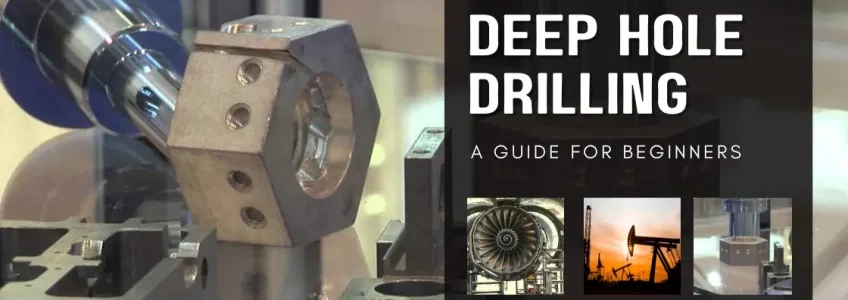Structural steel fabrication is the process of transforming raw steel into structures, products or components that can be used in construction or other industrial applications. Structural steel fabricators create a variety of steel beams, girders, decks and columns, among other things, that are used in a wide range of construction projects. So, if you are looking to get involved in the construction industry or just want to know more about steel beam fabrication, then this article is for you.
Deep hole drilling is a machining process that can produce holes up to ten times deeper than the diameter of the hole and is suitable for a variety of metals, including the strongest of superalloys. Deep hole drilling services require special tools and setups to deliver high-pressure coolant, cleanly evacuate chips and reach the depth-to-diameter. Deep hole drilling, also known as gun drilling, is a highly-specialised machining operation that only a few engineering companies can perform, including PRV Engineering. Here is a closer look at some of the processes, applications and pros and cons.
Industrial spray painting may not involve creating works of art but it still requires a high level of skill to perform the job well. Industrial spray painting works with several types of liquid materials including certain paints, stains and primers. Among the greatest benefits of commercial spray painting is the high degree of control and even finish on all types of surfaces.
Plasma cutting has been in use since the 1960s and is still the preferred method for automotive repair shops, fabrication shops, industrial construction sites and salvage operations. This is largely due to the high speeds and precision cuts these machines can achieve.
While it was rather time-consuming and expensive in the early days, advancements in technology and engineering techniques made it a more user-friendly, economical and productive method. In this article, we discuss different plasma cutting methods, how it works, some of the applications and pros and cons.
It’s a little surprising that drones in manufacturing are not as widely used since the global drone market is expected to exceed $15 billion in 2022. Right now, drones in manufacturing account for less than 2% cent of the total drone deployment despite the countless benefits unmanned aerial vehicles (UAVs) present to several industries. In this post, we take a closer look at how drones can be used in manufacturing along with some of the regulations.
The COVID-19 pandemic made it impossible to host engineering exhibitions, expos or any in-person events. Fortunately, the worst is behind us and the 2022 Subcon Show was a reminder of just how important subcontract engineering events can be. With more than 4,000 visitors and over 200 exhibitors, this remarkable event provides the sector with unmatched face-to-face networking, the latest innovations and some of the best business solutions on the market. As with Subcon Shows in the past, PRV Engineering was exhibiting and had the privilege of meeting many interesting people. Here’s a recap of the show and why it is regarded as one of the best networking events for subcontract engineering and manufacturing.
Machining is a term that refers to a variety of technologies and procedures in the manufacturing field. There are also different types of machining processes and tools, where some are standalone while others are used in conjunction with others. To help simplify what machining is, the processes and the techniques, we’ve compiled this comprehensive guide.
Unless you’ve been living under a rock, you’ve probably heard of 5G technology and how it could change our lives forever. 5G is the next-generation cellular data network and is slated to drastically improve wireless connections and data transfer rates. It will also be far more capable to power some of the most advanced technologies used in smart cities and autonomous vehicles among others.
Experts predict that 5G technology could have a huge impact on several sectors including manufacturing, defence and medical. In this article, we take a closer look at some of the most FAQs on 5G. Find out how it works, how fast the connection speed really is and whether 5G is safe.
Boring can be a frustrating and expensive process especially when you encounter rocks that can destroy your equipment. Powered by machine vision, a new tunnelling or drilling robot can micro tunnel through the toughest conditions faster and more reliably than conventional methods. According to the company, its next-gen drilling robot can bore through rock considered too challenging for other tunnelling machines.
Aluminium fabrication is defined as the process of cutting, shaping, and extruding aluminium to form a finished product. The processes involved spans widely from welding and stamping to bending, extruding and shearing, among others. For some time, many industries have benefitted from aluminium fabrication especially in the construction sector where companies require metal structures. Here are some commonly asked questions and answers about aluminium fabrication.











Recent Comments